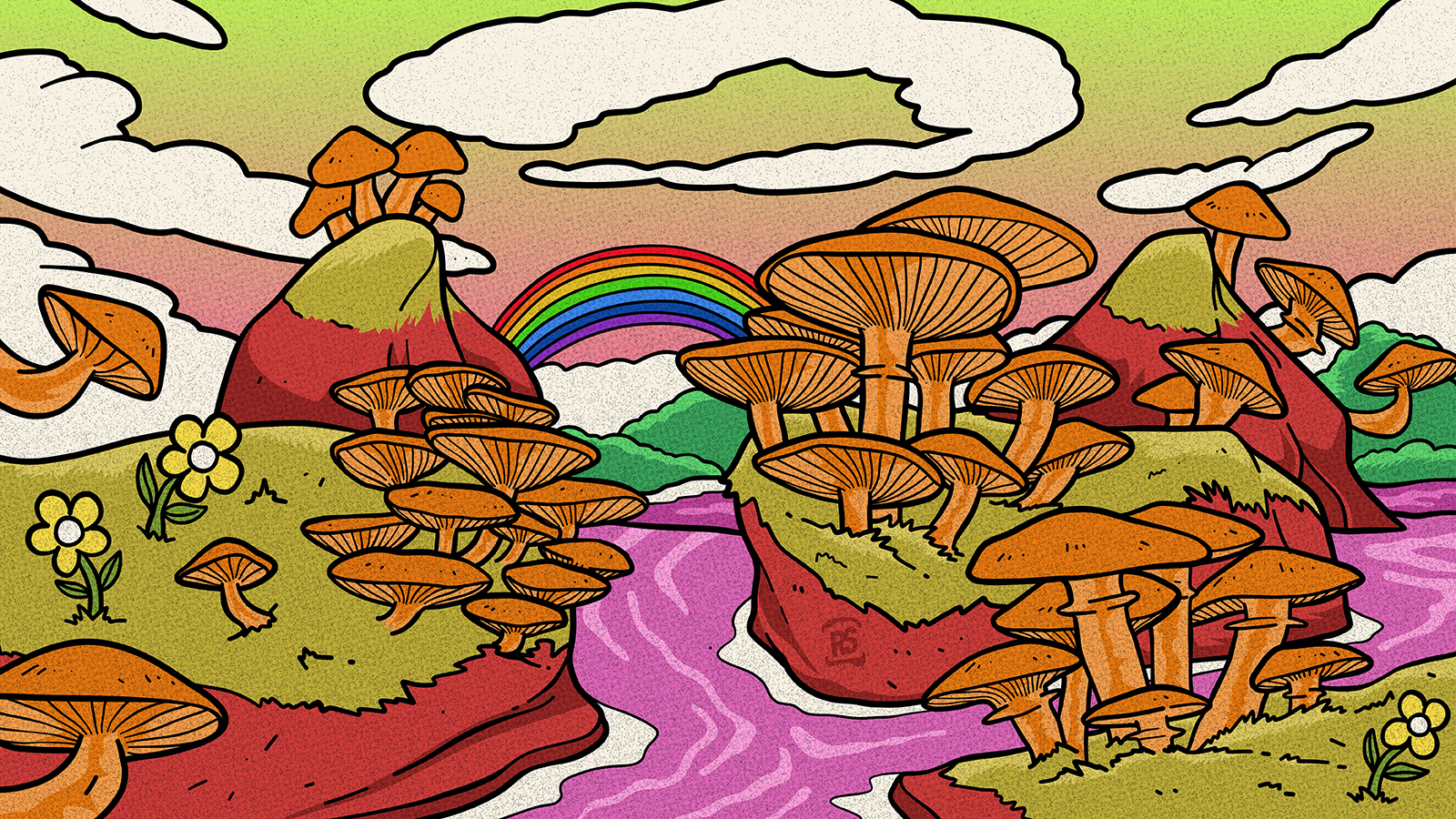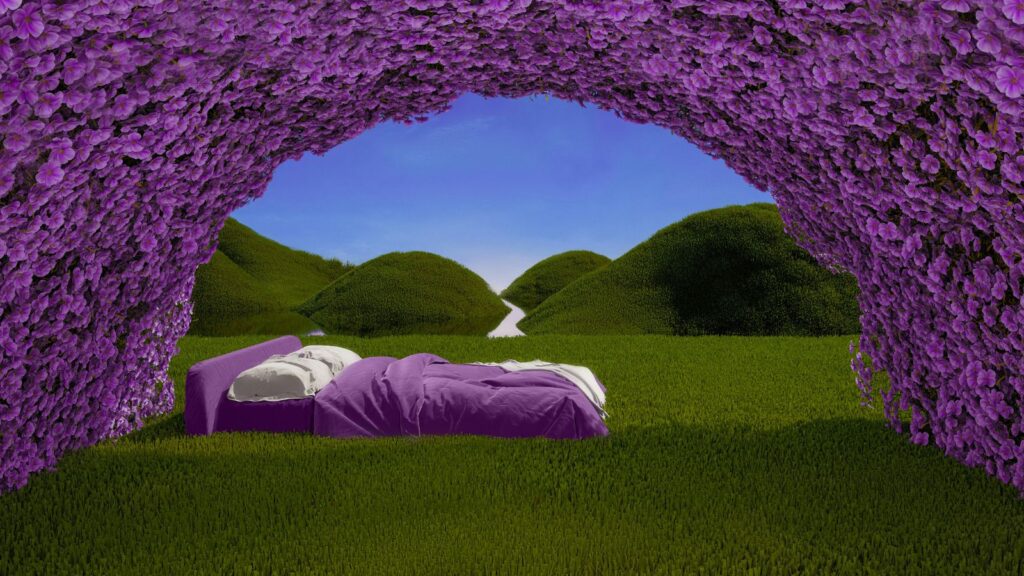Let’s take a fascinating trip into the world of a special mushroom called Gymnopilus aeruginosus, also known as the Magic Blue Gym mushroom. This mushroom isn’t just any ordinary fungus; it’s a colorful wonder that captures the imagination with its unique look and mind-changing powers.
For those who love to explore and learn about nature’s mysteries, our journey with the Magic Blue Gym is going to be exciting and full of surprises. We’re going to learn how to spot it, how much to use, and what makes it so special.
Understanding Gymnopilus Aeruginosus
Gymnopilus aeruginosus, commonly known as the Magic Blue Gym mushroom, is more than just a pretty face in the world of fungi. This mushroom has captured the attention of both scientists and enthusiasts for its unique characteristics and effects. Let’s break down what makes this mushroom so fascinating, looking at its scientific classification, psychoactive nature, and a general overview of its features.
Scientific Classification and Common References
Gymnopilus aeruginosus is part of the Hymenogastraceae family, a group known for its interesting features and effects. In scientific circles, it’s recognized for its distinct appearance and its place in the fungal taxonomy. Commonly, it’s called the Magic Blue Gym due to its blue-green hue.
Psychoactive Nature and Hallucinogenic Properties
What sets Gymnopilus aeruginosus apart is its psychoactive nature. This mushroom contains the compounds psilocybin and psilocin, which are known for their mind-altering effects. These substances can lead to hallucinations, making the Magic Blue Gym a point of interest for those exploring altered states of consciousness.
Physical Characteristics of Gymnopilus Aeruginosus
Gymnopilus aeruginosus is notable for its broad cap and gorgeous gills. It has a robust structure and bruises deep blue when handled. The mushroom typically grows on decaying wood, especially hardwoods, and is found in temperate regions.
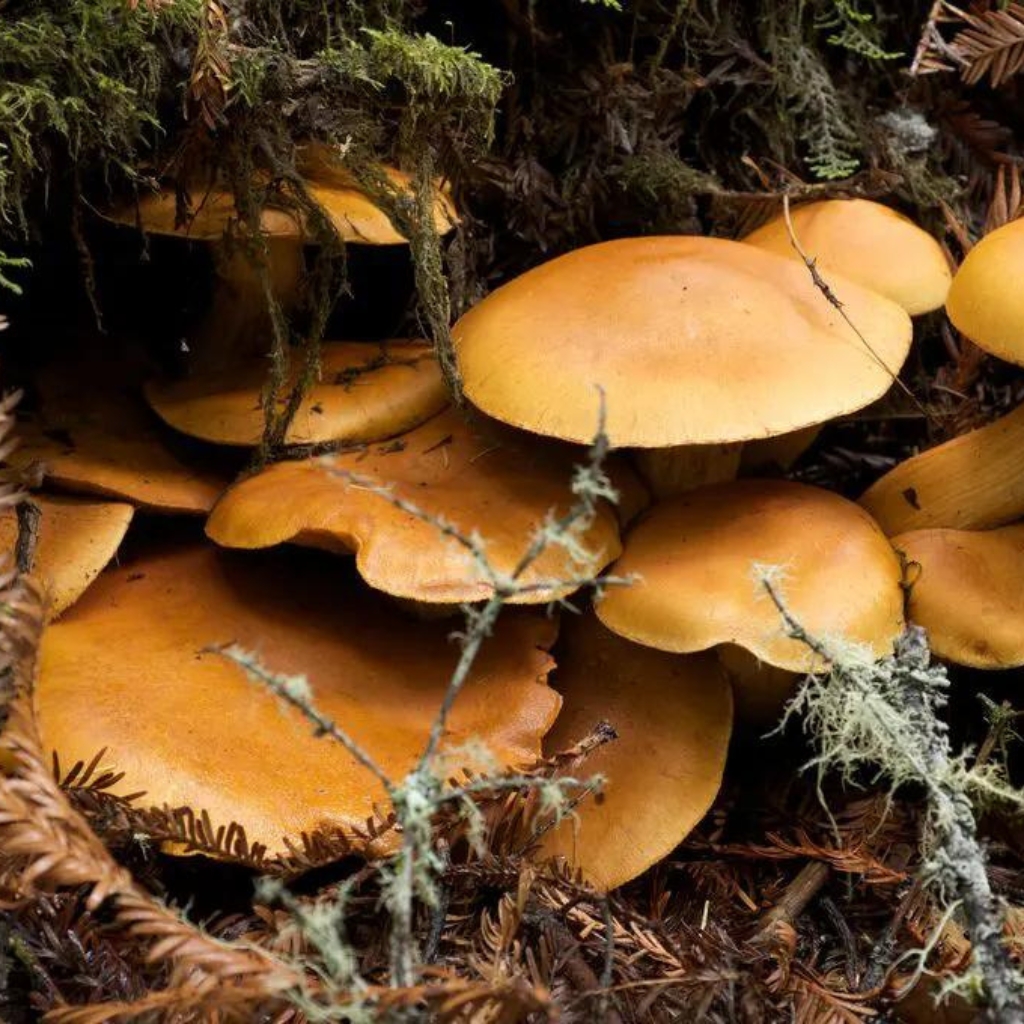
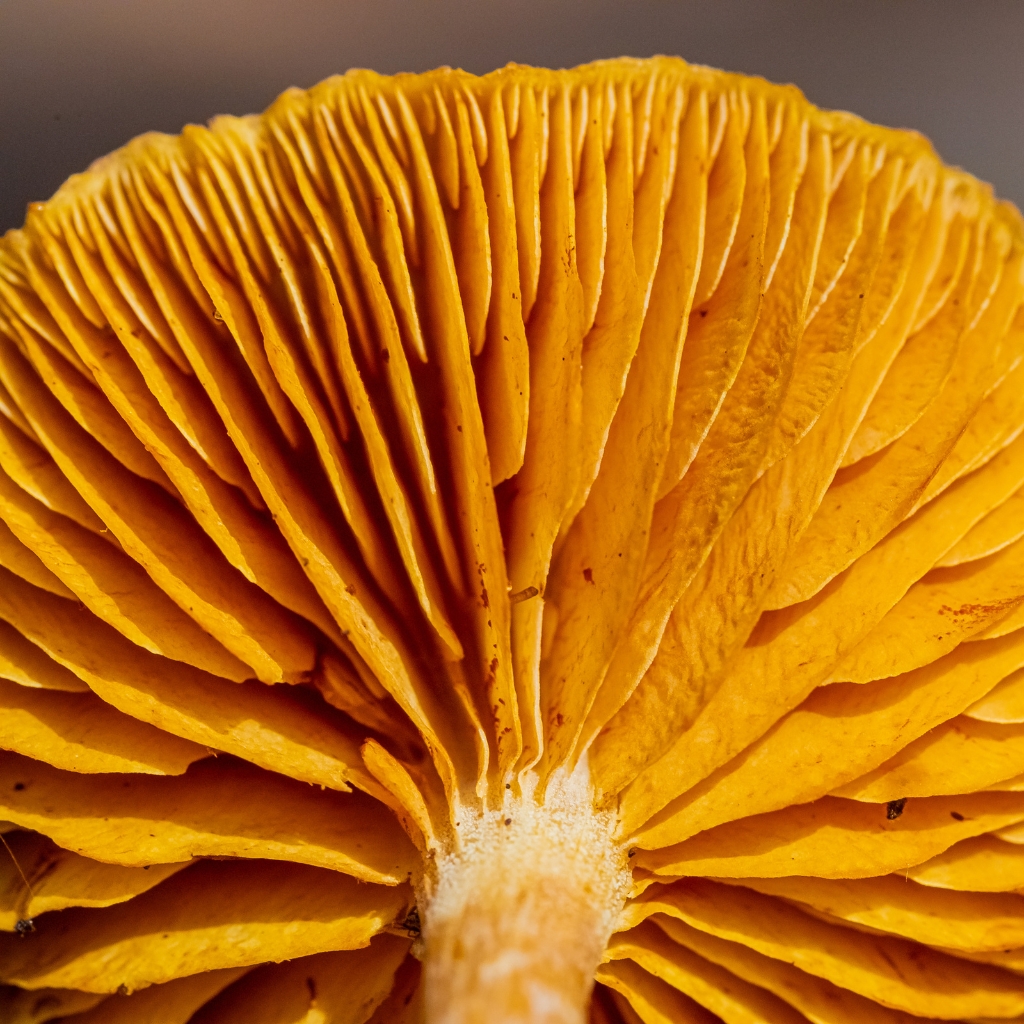
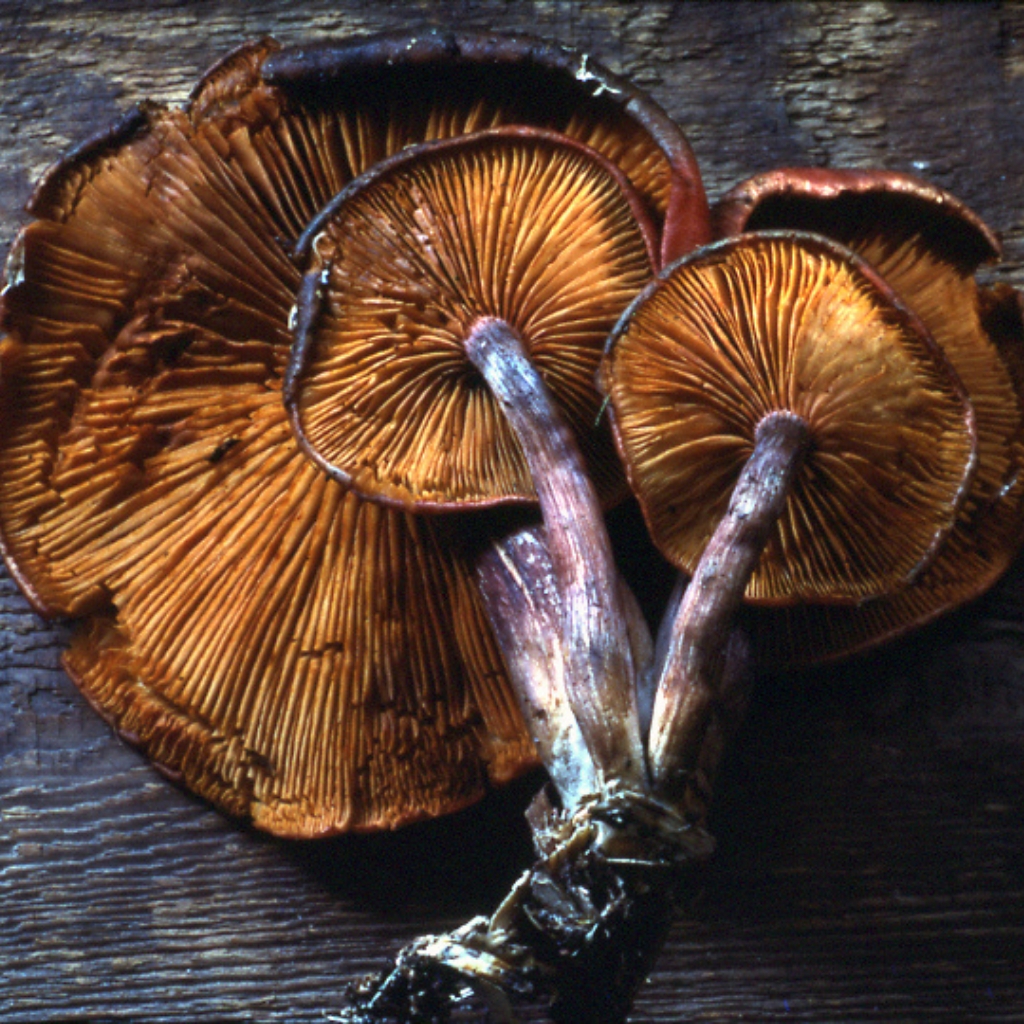
Photo courtesy of Vancouver Mycological Society and iNaturalist.ca
Gymnopilus Aeruginosus Identification
Identifying Gymnopilus aeruginosus, the Magic Blue Gym mushroom, is a key skill for enthusiasts and mycologists alike. Its unique features set it apart from other fungi, making it a fascinating subject for study.
Descriptive Characteristics
When identifying Gymnopilus aeruginosus, there are several key characteristics to look for:
- Cap: The cap is perhaps the most distinctive feature. It’s typically blue-green, often with a rusty or brownish center. The cap’s surface can range from smooth to slightly textured.
- Gills: The gills are closely spaced and tend to be yellowish, becoming greenish as the mushroom ages.
- Stem: The stem is sturdy and thick, enlarging towards the base. It usually has a similar coloration to the cap, though it can be lighter.
- Smell and Taste: This mushroom has a mild, earthy aroma. The taste is slightly bitter, which is common among many psychoactive mushrooms.
- Spores: The spore print is another critical identification feature—Magic Blue Gym produces rust-colored, elliptical spores.
It’s important to note that while Gymnopilus aeruginosus is not toxic in the traditional sense, it’s not considered edible due to its psychoactive effects. Consumption should be approached with caution and awareness of its hallucinogenic properties.
Habitat and Seasonality
Understanding where and when Gymnopilus aeruginosus grows is crucial for proper identification. This mushroom commonly grows on decaying wood, particularly favoring hardwoods. It’s often found in temperate climates, thriving in environments where its preferred wood sources are abundant.
Gymnopilus Aeruginosus vs. Look-Alikes
Distinguishing Gymnopilus aeruginosus from its look-alikes is crucial for both safety and accurate identification. Several mushrooms share similarities with the Magic Blue Gym, but knowing the key differences can prevent misidentification, which is especially important given the psychoactive nature of Gymnopilus aeruginosus.
Identifying Unique Features
Gymnopilus aeruginosus stands out with several distinctive features. Its cap color is particularly striking, setting it apart from look-alikes that may only have a greenish tint. The specific shade and intensity of this blue-green are exclusive to this species. However, the magic blue gym is also brown, tan, or rust-colored.
Another reliable identification tool is its rust-colored spore print, contrasting with the different spore print colors of similar mushrooms. It typically grows on hardwood, a habitat preference that helps in distinguishing it from other species favoring different substrates.
Caution and Advisory on Seeking Expert Consultation
It is essential to approach the identification of Gymnopilus aeruginosus with caution. Mistaking it for a non-psychoactive or even a toxic mushroom could have serious consequences. For those new to mushroom foraging or identification, it’s highly recommended to consult with an expert. Experienced mycologists can provide guidance and help confirm the identity of mushrooms.
Additionally, many regions have local mycology clubs or online forums where enthusiasts and experts share their knowledge and offer identification assistance. These communities can be invaluable resources for learning and double-checking findings.
Given the psychoactive nature of Gymnopilus aeruginosus, it’s also important to be aware of the legal implications of foraging, possessing, or using this mushroom. Laws vary by region, so it’s crucial to understand and comply with local regulations.

Potential Benefits
Psilocybin mushrooms possess a range of potential therapeutic benefits. Understanding these aspects is vital for those considering its use, whether for personal exploration or therapeutic purposes.
Mental Health Treatment
Emerging research suggests these compounds may offer significant benefits in treating conditions like depression, anxiety, and post-traumatic stress disorder (PTSD). Psilocybin, in particular, has been shown to create profound psychotherapeutic effects, potentially resetting certain neural pathways.
Neuroplasticity
There’s growing evidence that psilocybin can promote neuroplasticity, the brain’s ability to form new neural connections. This can lead to improved mental flexibility and cognitive function.
Spiritual and Personal Growth
Many users report profound spiritual experiences and personal insights after consuming psychoactive mushrooms, leading to long-term positive changes in their perspective and attitude.
Dosage, Timing, and Effects Post-ingestion
Determining the right dosage of Gymnopilus aeruginosus requires careful consideration of individual sensitivity and the desired effect. Beginners are advised to start with a small dose, typically a fraction of a gram of dried mushroom, to assess their response and tolerance. The onset of effects usually occurs 20 to 40 minutes post-ingestion, with the duration varying based on dose and metabolism.
Users might experience a spectrum of effects ranging from sensory enhancements to deep emotional and cognitive shifts. For those seeking deeper exploration, it’s recommended to incrementally increase the dose in later sessions, allowing a gradual build-up of familiarity with its effects for a more controlled and effective experience.
For those new to psychedelics, having a sober trip sitter or guide who is experienced with these substances can provide safety and reassurance. They can assist in navigating the experience, especially if it becomes emotionally or psychologically challenging.
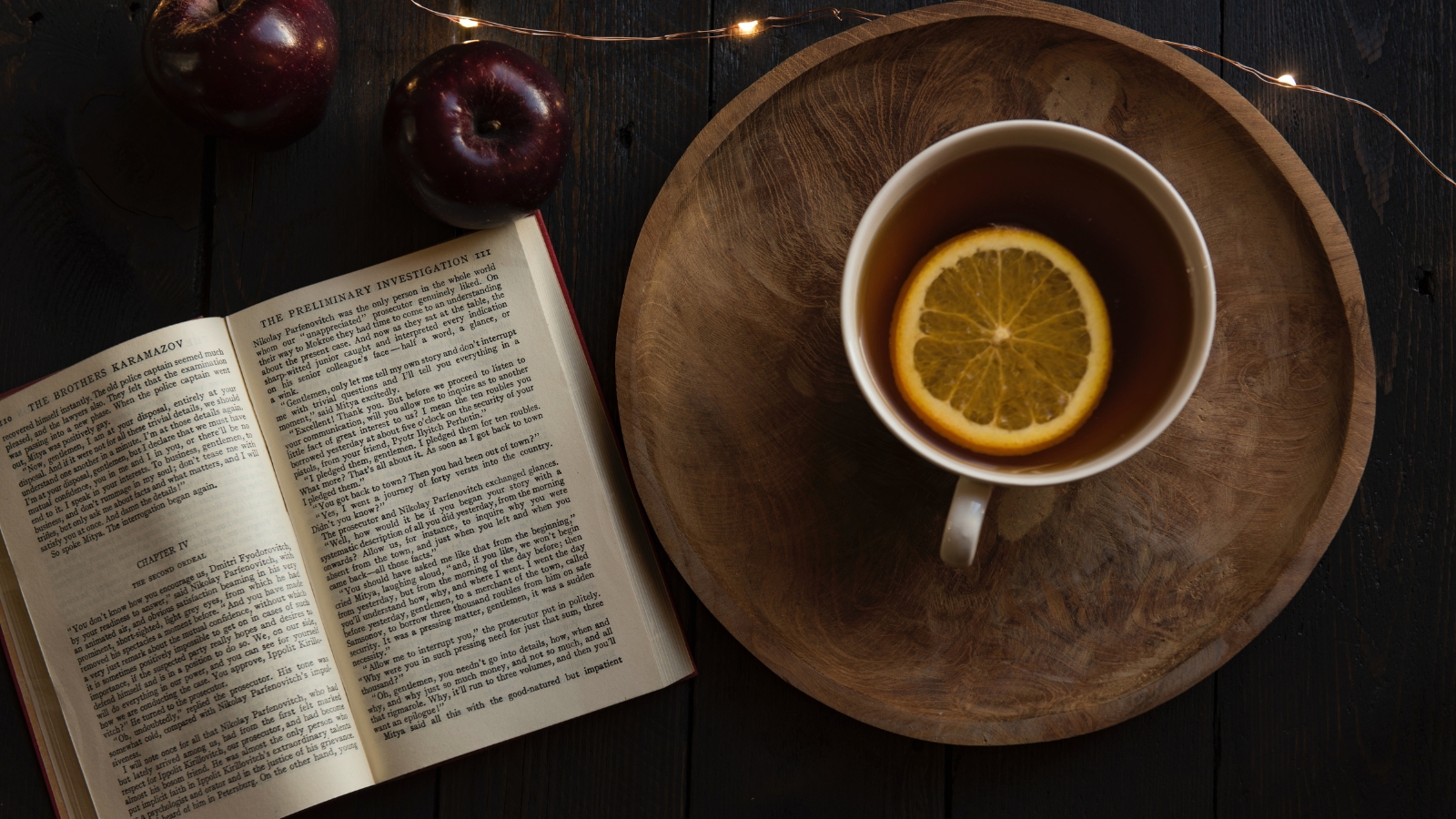
Methods of Consumption
Exploring the various methods of consuming Gymnopilus aeruginosus can enhance the experience and potentially modify the effects. Each method offers a different approach to preparation and ingestion, impacting the onset, intensity, and duration of the psychoactive effects.
Lemon Tek
The lemon tek method involves soaking mushrooms in lemon juice. The acidic environment of the lemon juice is believed to partially convert psilocybin into psilocin, the compound directly responsible for the psychedelic effects. This can lead to a faster onset and a more intense trip, but potentially shorter in duration.
Shroom Tea
Brewing tea with mushrooms is another popular method. This involves steeping the ground or chopped mushrooms in hot water. Shroom tea is gentler on the stomach, reducing the likelihood of nausea, a common side effect of raw mushroom consumption. The effects of tea can be felt more quickly compared to eating the mushrooms whole but may be somewhat less intense.
Raw or Cooked
Consuming the mushrooms in their natural state, either raw or slightly cooked, is the most straightforward method. This approach is often preferred by those who want to experience the effects in their most unaltered form. However, it’s important to be aware that eating mushrooms raw can be challenging for some due to the taste and potential gastrointestinal discomfort.
That’s All for the Magic Blue Gym
In our exploration of Gymnopilus aeruginosus, the Magic Blue Gym mushroom, we’ve uncovered its unique qualities, from its vivid blue-green color to its notable psychoactive effects. We’ve examined its identification and consumption methods, emphasizing the importance of dosage and safety.
This mushroom offers a captivating look into the complex world of fungi, appealing to psychedelic enthusiasts and nature lovers alike. As we explore the realm of psychoactive substances, Gymnopilus aeruginosus stands out as a symbol of the deep, mysterious connections between nature and human experience, reminding us of the importance of knowledge, respect, and responsible use in our interactions with these natural wonders.
